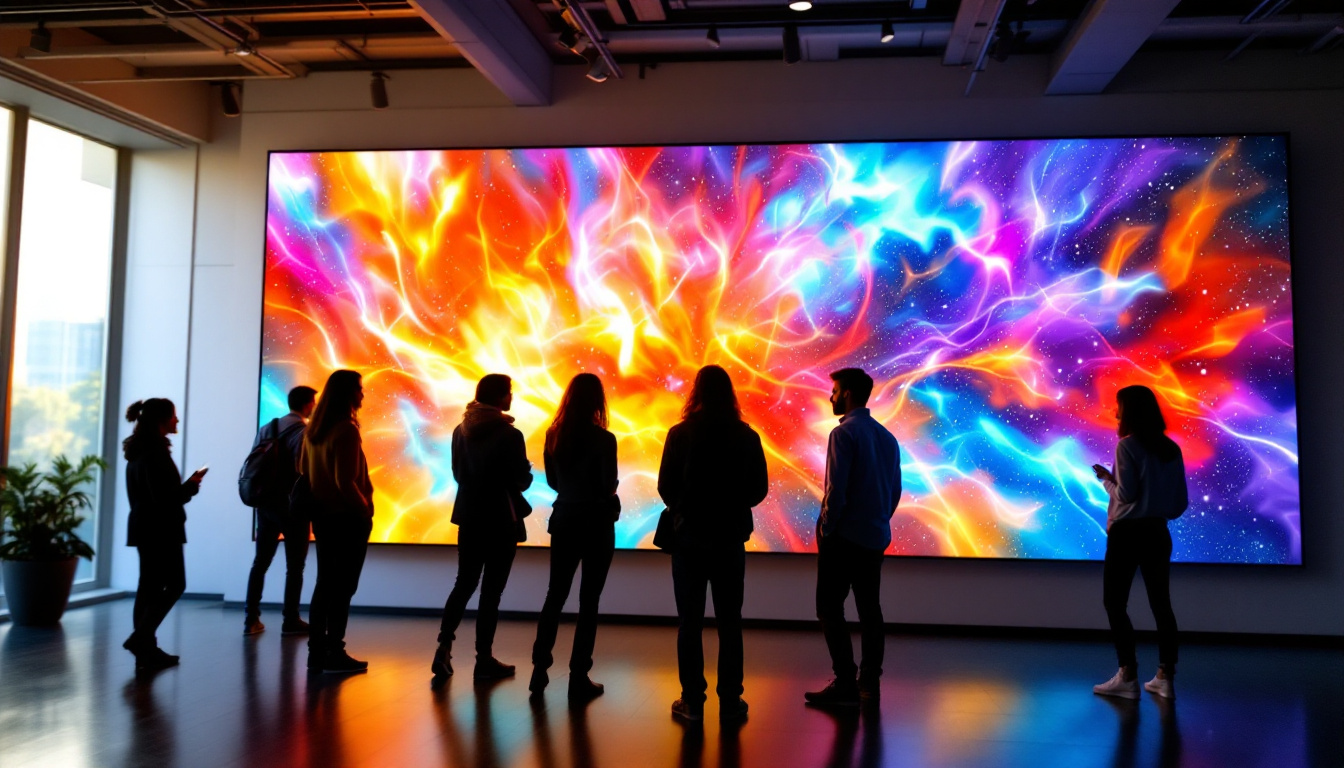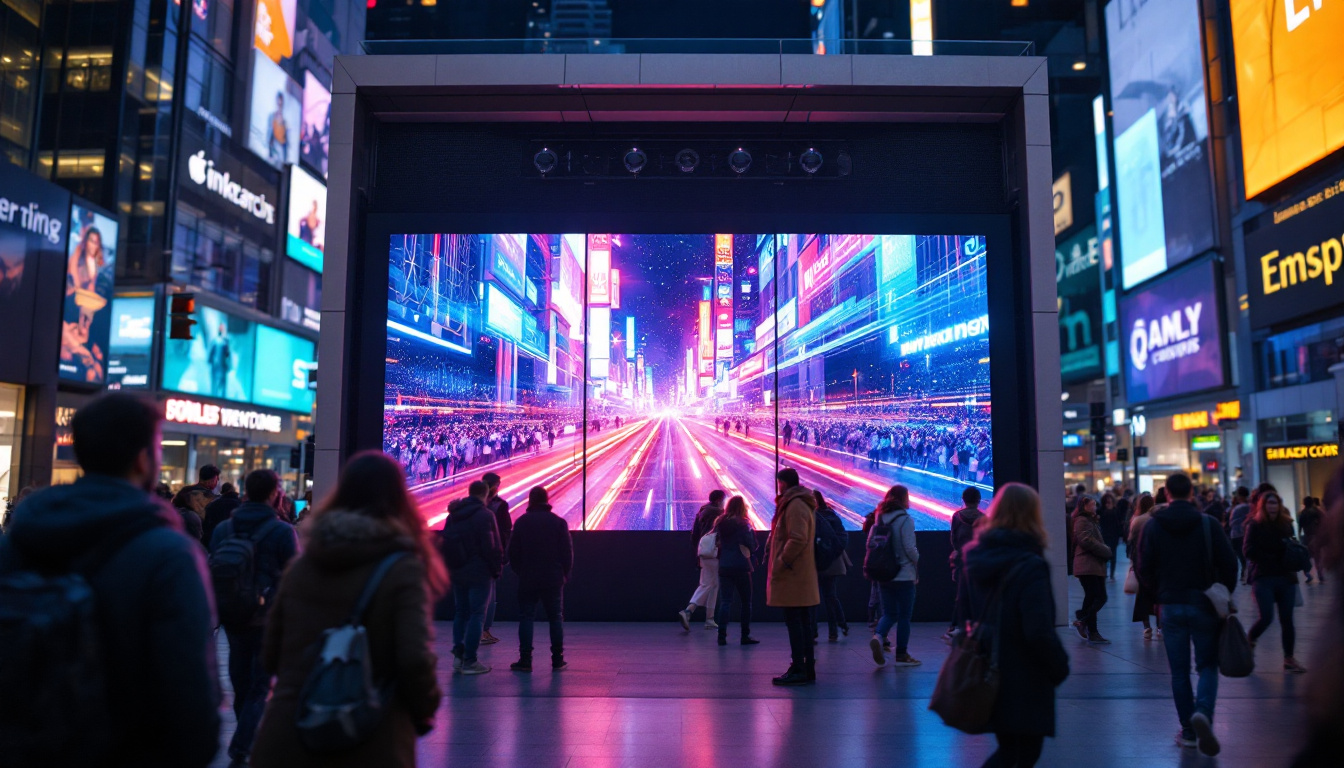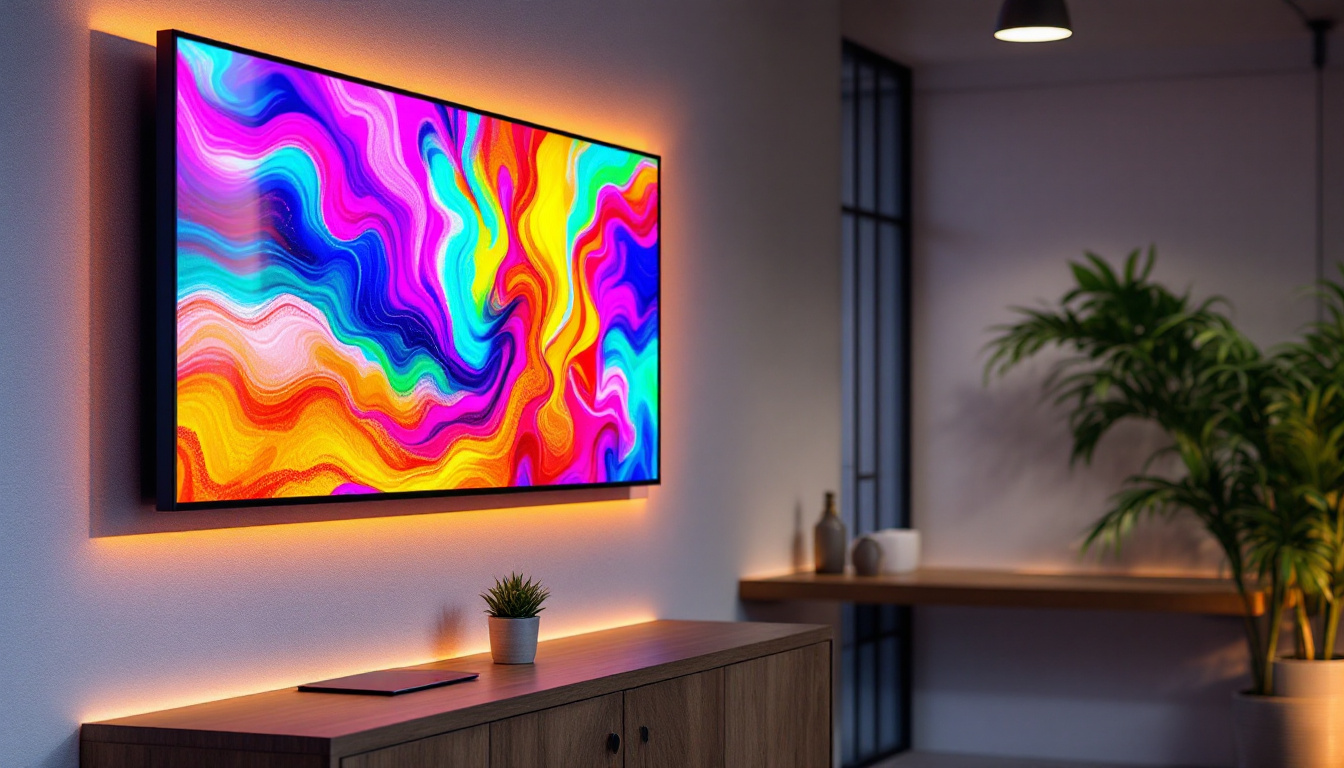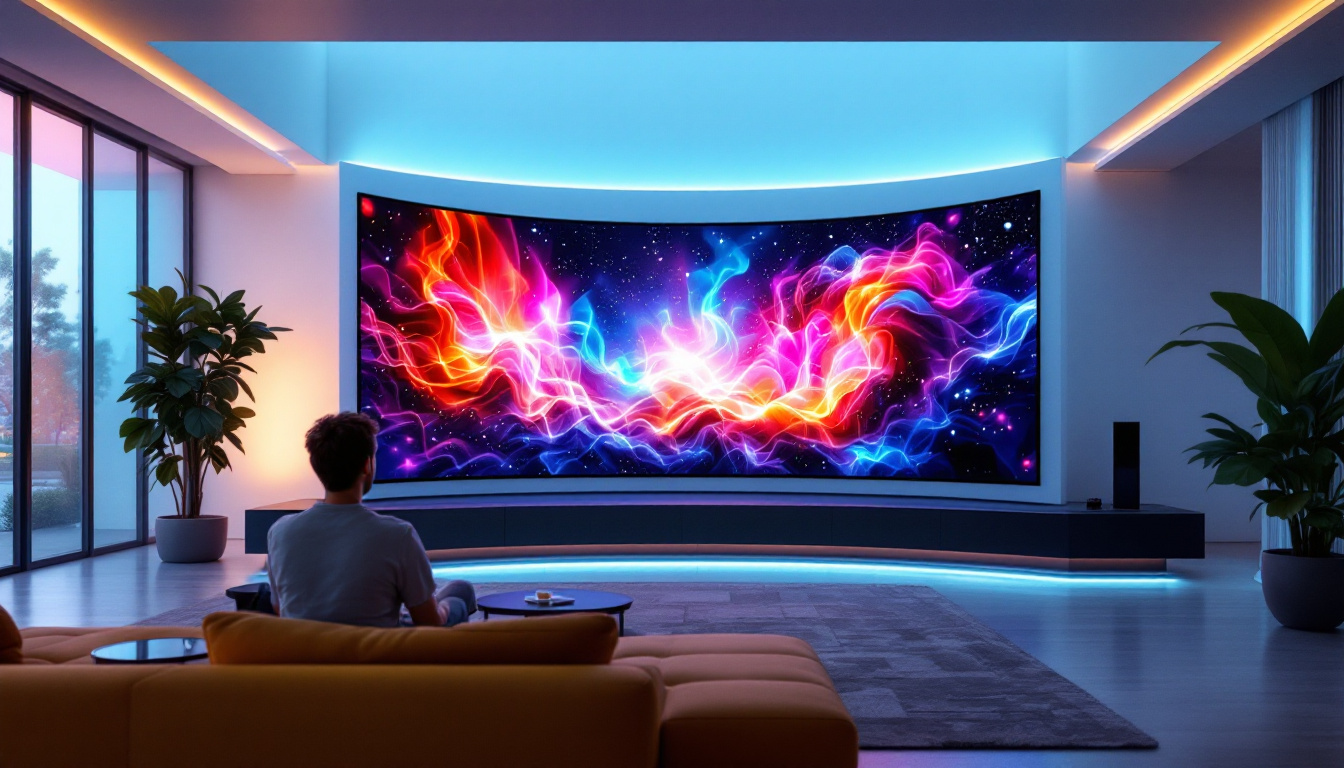In the modern age of technology, churches are increasingly incorporating advanced audiovisual systems to enhance their worship services and community events. Among these technologies, LED display screens have emerged as a popular choice for projector screen packages. This article delves into the various aspects of LED displays, their benefits, and how they can be effectively utilized in church settings.
Understanding LED Displays
LED, or Light Emitting Diode, displays are a type of flat panel display technology that uses an array of tiny light-emitting diodes to produce images and videos. Unlike traditional projector screens that rely on projection technology, LED displays provide a more vibrant and clear viewing experience, making them ideal for large gatherings. The technology has evolved significantly over the years, leading to improvements in energy efficiency and lifespan, which are crucial for organizations looking to invest in long-term solutions.
How LED Displays Work
LED displays operate by illuminating individual pixels with light. Each pixel is made up of red, green, and blue diodes that combine to create a wide spectrum of colors. This method allows for a high level of brightness and contrast, making images appear sharp and vivid even in well-lit environments. The precision with which these diodes can be controlled means that LED displays can render dynamic content, such as live video feeds or animated graphics, with exceptional clarity and fluidity.
Additionally, LED displays can be configured in various sizes and shapes, which provides flexibility for different church spaces. Whether it’s a large sanctuary or a smaller meeting room, LED displays can be tailored to meet specific needs. This adaptability not only enhances the aesthetic appeal of the space but also improves the overall engagement of the congregation, as attendees can enjoy a more immersive experience. Furthermore, many modern LED displays come equipped with smart technology features, allowing for easy integration with other multimedia systems, such as sound and lighting, to create a cohesive worship environment.
Types of LED Displays
There are several types of LED displays available, each suited for different applications. The most common types include:
- Direct View LED: These displays are made up of individual LED modules that are assembled together to form a larger screen. They are often used for outdoor events due to their high brightness levels. Their robust design also makes them resistant to weather conditions, ensuring that the visuals remain impactful regardless of the environment.
- LED Video Walls: Composed of multiple smaller screens, video walls can create a large, seamless display. They are perfect for churches that want to make a bold visual statement during services. The modular nature of video walls allows for creative configurations, enabling churches to customize the layout to fit their unique architectural designs.
- LED Projector Screens: These screens combine traditional projection technology with LED backlighting, providing enhanced brightness and color accuracy. This hybrid approach allows for greater versatility in presentation styles, accommodating both static images and dynamic video content with ease.
In addition to these types, LED displays are also increasingly being utilized for interactive applications, such as touch screens for congregation engagement or informational kiosks in church lobbies. This interactivity not only enhances communication but also fosters a sense of community by allowing members to access information, sign up for events, or participate in polls directly from the display. As technology continues to advance, the potential applications for LED displays in religious settings are expanding, paving the way for innovative worship experiences that resonate with diverse audiences.
The Advantages of LED Displays for Churches
Choosing LED displays over traditional projector screens offers numerous advantages, particularly for churches looking to improve their audiovisual experience.
Enhanced Visual Quality
One of the most significant benefits of LED displays is their superior visual quality. The brightness and clarity of LED screens ensure that congregants can see the content clearly, regardless of the lighting conditions. This is particularly important during services, where hymns, sermon notes, and multimedia presentations are displayed.
Energy Efficiency
LED technology is known for its energy efficiency. Compared to traditional projection systems, LED displays consume less power while providing brighter images. This not only helps reduce electricity costs for churches but also aligns with the growing emphasis on sustainability in community practices.
Choosing the Right LED Display Package
When selecting an LED display package for a church, several factors should be considered to ensure the best fit for the specific environment and needs.
Screen Size and Resolution
The size of the LED display is crucial. It should be large enough to be seen from all areas of the church, including the back rows. Additionally, the resolution of the display is vital for clarity. Higher resolution screens provide sharper images, which is particularly important for detailed graphics and text.
Installation and Setup
Installation is another critical aspect to consider. Some LED displays are designed for easy installation, while others may require professional assistance. Churches should evaluate their technical capabilities and budget when deciding whether to hire professionals or undertake the installation themselves.
Integrating LED Displays into Church Services
Once an LED display package has been selected, the next step is to integrate it into church services effectively. This involves planning how the display will be used during worship and other events.
Content Creation and Management
Creating engaging content for the LED display is essential. This can include sermon notes, song lyrics, announcements, and multimedia presentations. Many churches utilize software designed for content management, allowing for easy updates and scheduling of different content types.
Furthermore, training volunteers or staff members to manage the content and operate the display during services can enhance the overall experience. Regular updates and fresh content keep the congregation engaged and informed.
Enhancing Worship with Visuals
Visuals play a significant role in modern worship services. LED displays can be used to project images, videos, and animations that complement the message being delivered. For instance, during a sermon on creation, a pastor might choose to display stunning nature visuals that resonate with the theme.
Maintenance and Longevity of LED Displays
To ensure the longevity and optimal performance of LED displays, regular maintenance is essential. This includes routine cleaning, software updates, and monitoring for any technical issues.
Regular Cleaning and Care
Dust and dirt can accumulate on LED displays, affecting their brightness and clarity. Regular cleaning with appropriate materials can help maintain the screen’s quality. It’s advisable to follow the manufacturer’s guidelines for cleaning to avoid damage.
Software Updates
Just like any technology, LED displays require software updates to function optimally. Keeping the display’s software up to date ensures that it operates smoothly and incorporates the latest features and security measures.
Cost Considerations for LED Display Packages
Investing in an LED display package can be a significant financial commitment for churches. Understanding the costs involved can help in making an informed decision.
Initial Investment vs. Long-Term Savings
While the initial investment in LED technology may be higher than traditional projector systems, the long-term savings in energy costs and maintenance can offset this initial expense. Additionally, the enhanced visual experience can lead to increased engagement during services, which is invaluable.
Financing Options and Grants
Many churches explore financing options or grants to help cover the costs of purchasing LED displays. Various organizations offer funding specifically for technological upgrades in houses of worship. Researching these options can provide additional financial support.
Case Studies: Successful LED Display Implementations
Examining successful implementations of LED displays in churches can provide valuable insights and inspiration for other congregations considering similar upgrades.
Large Urban Church
A large urban church recently upgraded to an LED video wall to enhance their worship experience. The display was used to project sermon notes and multimedia content, leading to increased engagement and participation from the congregation. The church reported a significant improvement in the clarity of visuals, even in bright lighting conditions.
Small Community Church
A small community church opted for a smaller LED display package to accommodate their intimate setting. The display was used for song lyrics and announcements, which helped foster a sense of community and connection among congregants. The church found that the investment significantly improved their worship experience without overwhelming their budget.
The Future of LED Displays in Churches
The future of LED displays in churches looks promising as technology continues to evolve. Innovations in display technology, such as higher resolutions and more energy-efficient models, will likely make these systems even more accessible and effective for congregations.
Emerging Trends
As churches continue to adapt to the digital age, trends such as interactive displays and augmented reality may become more prevalent. These technologies can further enhance the worship experience by providing immersive and engaging content for congregants.
Community Engagement
LED displays can also play a role in community engagement beyond worship services. They can be used to promote church events, share community news, and even facilitate outreach programs. This versatility allows churches to connect with their communities in meaningful ways.
Conclusion
LED display technology has transformed the way churches communicate and engage with their congregations. By understanding the benefits, types, and applications of LED displays, churches can make informed decisions that enhance their worship experience and foster community connections. As technology continues to advance, the potential for LED displays in churches will only grow, paving the way for more innovative and engaging worship environments.
Investing in a quality LED display package is not just about keeping up with technological trends; it’s about enriching the spiritual experience and making a lasting impact on the congregation. With careful planning and execution, churches can harness the power of LED displays to create a vibrant and engaging atmosphere for worship and community activities.
Discover LumenMatrix LED Display Solutions for Your Church
Ready to elevate your worship experience with cutting-edge LED display technology? LumenMatrix offers a wide range of innovative solutions tailored to meet the unique needs of your church. From vibrant Indoor LED Wall Displays to impactful Outdoor LED Wall Displays, and even Custom LED Displays designed to fit any space, our mission is to revolutionize your visual communication. Enhance your congregation’s engagement and ensure your message resonates with clarity. Check out LumenMatrix LED Display Solutions today and transform your worship environment.































